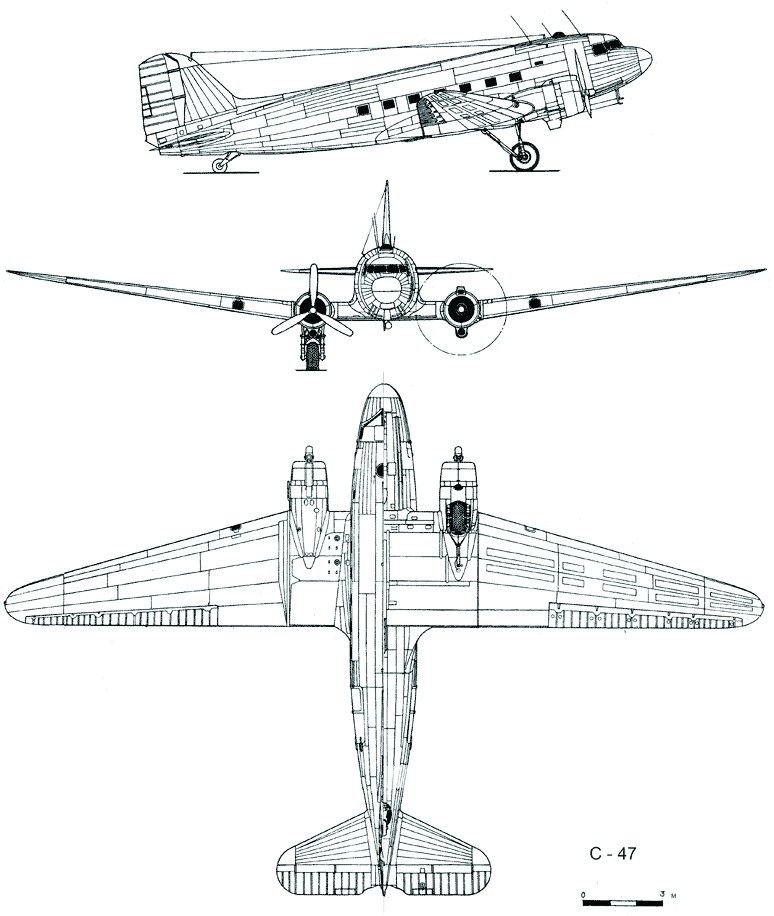The C-47, also known as “Gooney Bird,” is the military variant of the Douglas DC-3, widely considered one of the most important transport aircraft of all time.
First manufactured in 1936, the C-47B was a military transport aircraft adapted from the DC-3 Commercial Airliner. These aircraft carried personnel and cargo, towed gliders, dropped paratroopers and flares for night bombing attacks, hauled supplies and evacuated the wounded during both World War II and the Korean War. Additionally, they served in transport, gunship and reconnaissance roles during the Vietnam War. These aircraft continue to be used today.


Serial Number: 43-49281
Manufacturer: Douglas Aircraft Company
Crew: Three to five
Engines: Two Pratt & Whitney R-1830-90C Twin Wasp radials; 1,200 horsepower each
Wingspan: 95 feet 6 inches
Length: 63 feet 9 inches
Height: 17 feet
Weight: 17,865 pounds (empty); 31,000 pounds (loaded)
Speed: 185 mph (cruising); 230 mph (maximum)
Range: 1,500 miles
Service Ceiling: 26,400 feet
Armament: None
Cost: $88,574 (average C-47 cost of unit as of 1944)
Starting in the 1940s, Hill Air Force Base repaired the Pratt & Whitney engines used in the C-47 aircraft. However, the C-47 has another interesting history tie to this area. In 1949, cold winter weather conditions threatened Utah’s remote communities. Under the project name, “Operation Hayride,” pilots used the C-47 aircraft to deliver food, medical supplies, coal and oil for heaters to these communities. The C-47s also dropped bales of hay along the foothills of the Wasatch Mountains to hungry deer. The C-47B on display was manufactured in 1944 and served at bases all over the United States. In 1962, it was transferred to a storage facility, and in 1975, the aircraft was used by elite “Smokejumpers” (parachuting firefighters) to fight forest fires for the United States (US) Forest Service around Ogden, Utah. After over 16,000 flight hours, Hill Aerospace Museum acquired the aircraft for display in 1984.
The C-47, also known as “Gooney Bird,” is the military variant of the Douglas DC-3, widely considered one of the most important transport aircraft of all time.
The nickname derives from its less than glamorous appearance, resembling a large, lumbering bird similar to an albatross.
The Skytrain was widely used during the Vietnam War and was the first aircraft re-purposed as an airborne gunship, the AC-47 Spooky. This role is now handled by the AC-130W Stinger II gunship.